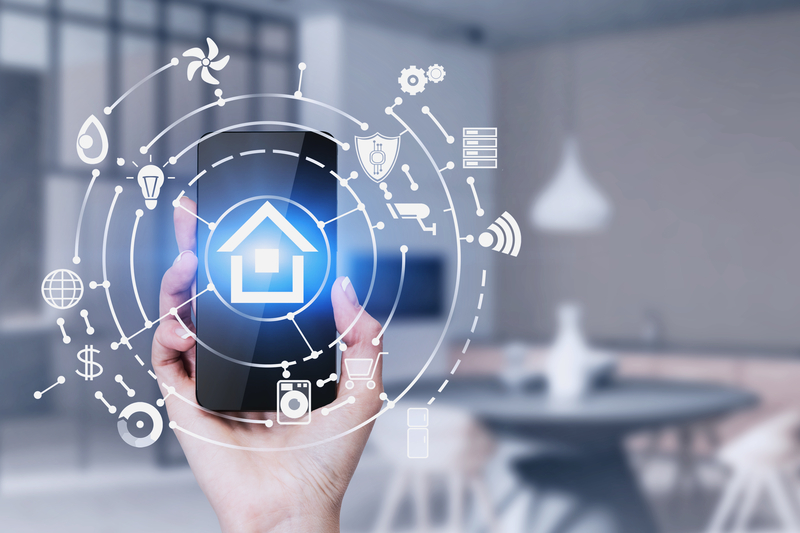
Projects
Setting Up a Smart Home: Here's What You Need to Know

As more homeowners in Singapore consider remodelling their new homes, whether it be an HDB, condominium, or landed property, the use of various features of home automation is growing in popularity. As demand increases, more local startups are entering this market and working with interior design companies to offer smart home goods and services. Keep reading to discover how to set up a smart home in Singapore!
Planning for a smart home
First things first! You must assess your budget and decide how much you can spend on a smart home solution. There's a wide variety of smart home solutions fit for any budget so you're sure to find the best option for you and your home. Once you have that down, think about the type of system you want for your home as there are so many different options available. Determine which devices will be compatible with the chosen system to integrate present and future gadgets into your configuration.
Setting up a smart home network
You need to select a smart home platform that works seamlessly with the devices you plan to use. Some popular smart home platforms include Amazon Alexa, Google Home, Apple HomeKit, Samsung SmartThings and more. Having a strong Wi-Fi network is crucial for your devices to function correctly. Ensure that your network is strong and stable to prevent disconnection issues in the future. You may also need a smart hub for easier management. A smart home hub is a central device that connects all your devices to a single platform, making it easier to manage them. Although some devices don't require a hub for management. The final step is to configure each of your devices to your smart home platform, set routines and rules, and control your devices from a smartphone app, voice command, or remote control.
Connecting smart home devices
The app of your preferred smart-home ecosystem lets you join devices together or arrange them according to rooms. If your living room has many lights, for instance, grouping them together will allow you to turn them on with just one command rather than having to say "Turn on living room light 1," "Turn on living room light 2," and so on.
Depending on the platform you're using, you can build custom groups, zones, or rooms to group rooms, separate sets of devices within rooms, or group devices across numerous rooms. It's important to give this some thought because it provides you far more freedom and control when using voice commands, automating processes, or creating routines.
The ability to automate a smart home is one of its best features. Your smart home system may, for instance, detect when you leave the house and turn off everything, or it could respond to your arrival home by turning on the lights, turning up the air conditioning, and playing your preferred music.
You can also schedule a variety of activities. This could be useful for specific appliances, like robot vacuums, to keep your home clean. Certain actions can be started with a specific, programmable word. You can program Google Assistant to open your curtains, start the coffee maker, and deliver a weather and news report simply by saying "Good morning" to it.
Security and privacy considerations
Having Google Assistant or Amazon Alexa may make it easier to order food or turn off the lights, but it also provides an open window into your house where thousands of people could be listening from anywhere in the globe and watching. Consumers are understandably leery of having their every word captured and transmitted online, and cloud connectivity and the "always-on" power model raise serious ethical questions.
Reducing reliance on the cloud and replacing it with embedded intelligence within the home's physical surroundings is the key to producing secure, private, and responsive homes. Secure the wifi connection in your home. Since your router serves as the central hub for all of your smart home devices, it is crucial that it is securely encrypted using WPA2. One of the best barriers against network espionage is encryption. Count the devices that are linked to your home network. Don't let some visitors in who you don't know. The likelihood of your data being hacked increases with the number of users who have access to your network.
Conclusion
Smart home modernization is a developing trend in Singapore. You can control your home's lighting, temperature, security systems, and more with the help of smart home solutions, which can bring convenience and comfort. It can be challenging to choose the system that will work best for you given the wide range of options now available on the market. In order for you to make an informed choice when furnishing your own house, it is hoped that this article was able to give an overview of some of the top smart home options available in Singapore. Creating a smart home needs some effort, research, and money, but it may improve your quality of life and make it safer and more convenient.
Setting up a Smart Home Automation System can be complex. L3 Homeation has installed and assisted businesses and individuals with installation and setup. Contact us, and we will share our knowledge, best practices, and experience in configuring Smart Home Systems and deploying smart devices.
